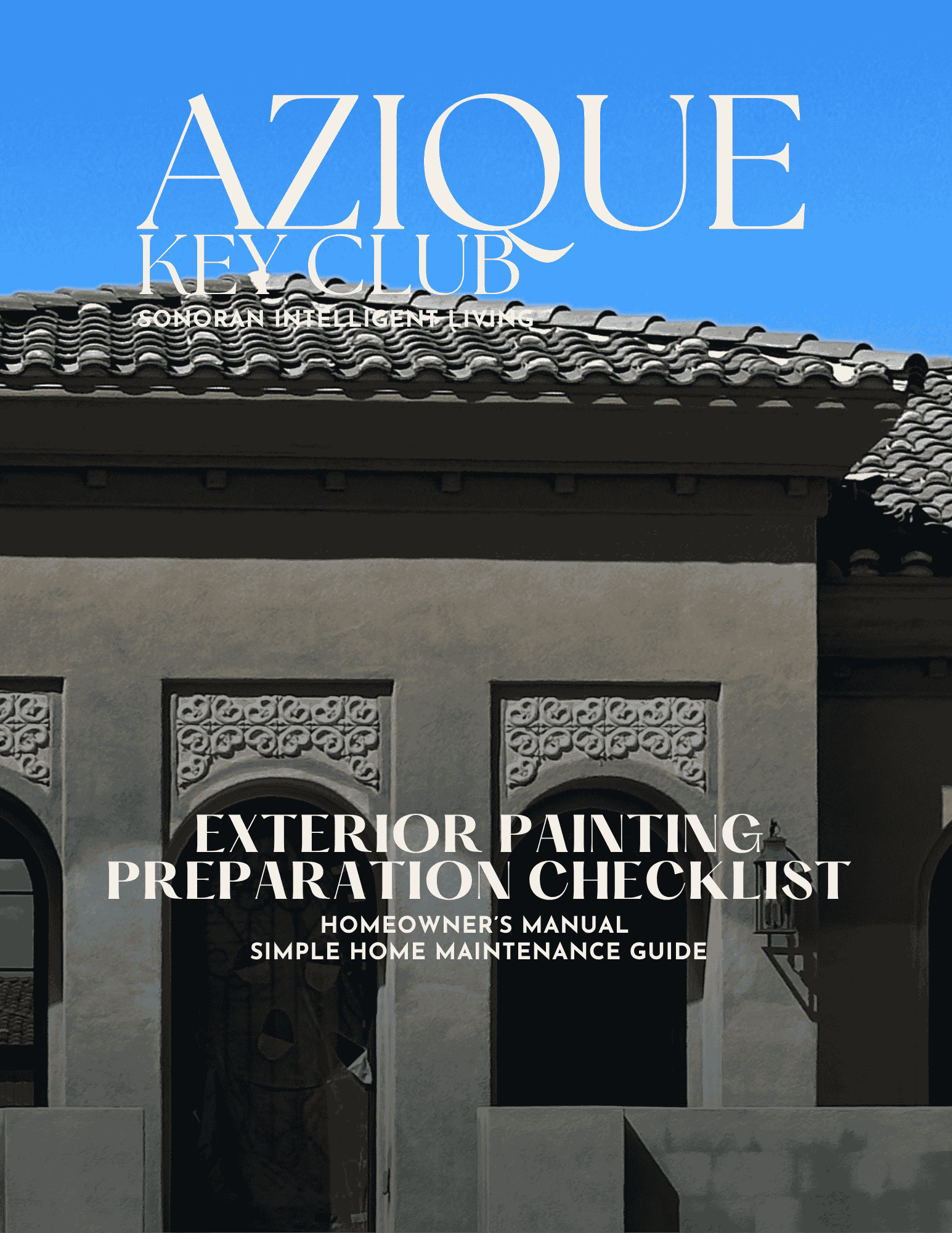
Exterior Painting Preparation Checklist

Preparing a home for exterior painting is an essential part of ensuring a long-lasting, smooth finish and protecting your investment. Proper preparation not only allows the paint to adhere properly but also improves the home’s curb appeal. Here's a comprehensive checklist for preparing a home for full exterior painting:
- Select Paint and Supplies:
- Choose paint type: For exterior surfaces, select high-quality paint designed for outdoor use (e.g., latex-based paint for flexibility, or oil-based for durability). Choose a finish suitable for your needs (e.g., satin, matte, or gloss).
- Calculate the amount of paint: Estimate the amount of paint needed by calculating the surface area of the house and checking the manufacturer’s coverage recommendation per gallon.
- Gather supplies: Ensure you have all necessary supplies, including brushes, rollers, drop cloths, painter’s tape, ladders, paint sprayers (if needed), caulk, and sandpaper.
- Plan a Timeline:
- Check weather: Exterior painting should be done in dry, mild weather (avoid painting on windy, rainy, or extremely hot days). A temperature range of 50°F to 85°F is ideal.
- Schedule: Plan for drying times between coats, and make sure you have enough time to complete the project without rush.
- Remove Obstacles:
- Move outdoor furniture and planters: Remove or cover any furniture, garden items, or outdoor decorations around the house to avoid them getting splattered with paint.
- Move vehicles: If the driveway or nearby areas will be painted, move vehicles to a safe area to avoid paint splashes and to allow easy access.
- Cover and Protect Surfaces:
- Protect landscaping: Use drop cloths or plastic sheeting to cover any plants, shrubs, and flowers close to the home. Consider using plastic sheets if your yard has grass, to prevent paint splatter.
- Cover hard surfaces: Tape drop cloths or plastic sheeting over walkways, decks, patios, or other hard surfaces that could be affected by drips or splatters.
- Use painter’s tape: Secure painter's tape along edges of windows, trim, doors, and any areas you don’t want to be painted, such as outdoor light fixtures, outlets, or vents.
- Inspect the Condition of Surfaces:
- Check for damage: Look for any cracks, holes, or areas of damage on the exterior surface, such as the foundation, siding, trim, or fascia boards.
- Identify mold or mildew: Check for the presence of mold or mildew on the surfaces, especially in shaded areas. This must be cleaned and treated before painting.
- Clean the Surfaces:
- Wash the exterior: Use a pressure washer or a hose with a scrub brush to remove dirt, dust, mildew, and cobwebs. For heavily soiled areas, use a cleaning solution of water and mild detergent, or a mixture of water and vinegar. Be sure to thoroughly rinse and allow the surface to dry before painting.
- Treat mold or mildew: If mold or mildew is found, treat it with a mixture of bleach and water (1 part bleach to 3 parts water), or a commercial mildew cleaner. Scrub the affected areas with a brush and rinse well.
- Scrape off Old Paint:
- Remove peeling paint: Scrape off any loose or peeling paint using a paint scraper or wire brush. This ensures the new paint will adhere well to the surface. You may need to use a heat gun for stubborn peeling paint, but always be cautious to prevent damaging the surface underneath.
- Sand rough spots: Sand areas that have been scraped to smooth out imperfections and ensure the surface is even.
- Fill Holes, Cracks, and Gaps:
- Fill cracks and holes: Use exterior-grade caulk or wood filler to fill in small holes, gaps, or cracks in siding, trim, and around windows and doors. For larger gaps or holes in wood, use a wood patching compound or epoxy filler.
- Repair damaged trim: Replace or patch any severely damaged trim pieces, such as broken fascia boards or rotting window frames, before painting. Wood that is too far gone may need to be replaced entirely.
- Smooth patched areas: After filling holes and cracks, smooth the surface with sandpaper once the filler has dried.
- Fix Rotted Wood:
- Inspect for rotting wood: Look for signs of rotting wood, especially on exterior trim, window frames, and doors. Replace any severely rotted areas with new wood.
- Sand the Exterior:
- Smooth surfaces: Sand all areas that have been patched, as well as any rough or uneven spots on the exterior. This will help the new paint adhere better and create a smooth finish.
- Use the right grit: For most surfaces, use medium-grit sandpaper (80 to 120 grit). For smoother finishes, use fine-grit sandpaper (150 to 220 grit) for the final pass.
- Dust Off Sanded Areas:
- Remove dust: After sanding, thoroughly clean off all dust and debris. Use a vacuum, a microfiber cloth, or a tack cloth to wipe down surfaces before painting.
- Caulk Gaps and Joints:
- Seal gaps around windows and doors: Use a high-quality, exterior-grade caulk to seal any gaps between window frames, doors, trim, and siding. This helps prevent air and water infiltration.
- Seal seams and joints: Caulk all seams, joints, and edges where different materials meet (e.g., between siding and trim, or around architectural details). Ensure the caulk is smooth and even to create a clean look once painted.
- Check weather conditions:
- Ensure dry weather: Confirm that the forecast indicates at least 24 hours of dry weather after painting, to allow the paint to dry properly.
- Temperature: Ensure temperatures are within the ideal range (50°F to 85°F) for both applying and drying paint.
- Inspect surfaces again:
- Final inspection: Walk around the house to ensure all surfaces are clean, patched, and ready for painting. Double-check that all areas are covered or taped off appropriately.
- Prepare for painting:
- Stir the paint: Stir the paint thoroughly to ensure even color and consistency.
- Test the paint: If you're unsure about color, texture, or finish, test the paint in an inconspicuous area to ensure it matches your expectations.
- Paint in sections: Begin painting the exterior starting from the top and working your way down to avoid drips. Work in small sections to ensure each area is covered evenly.
- Apply multiple coats: Apply at least two coats of paint for the best coverage and durability. Allow proper drying time between coats as recommended by the paint manufacturer.
- Use different tools for details: Use a brush for trim, edges, and corners, and a roller for larger wall areas. For a smooth finish, consider using a paint sprayer for large, flat surfaces.
Proper preparation is critical to achieving a professional-quality, durable paint job on the exterior of your home. By following this detailed checklist, you'll ensure that the surfaces are clean, smooth, and ready for paint, and that your exterior painting project will result in a stunning, long-lasting finish that boosts curb appeal and protects your home for years to come.




